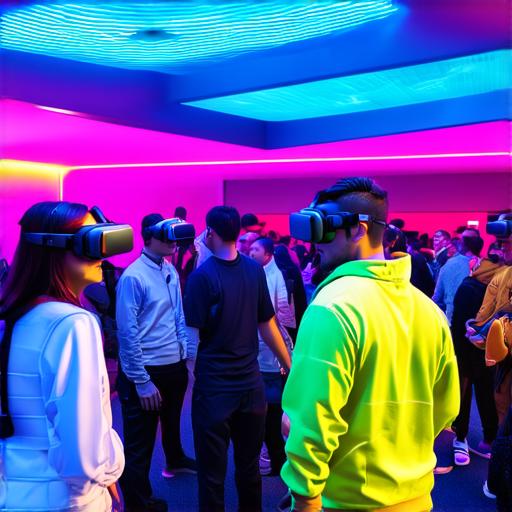Virtual reality (VR) is a rapidly growing technology that allows users to immerse themselves in a simulated environment. With VR, developers have the ability to create highly engaging and immersive experiences that can transport users to another world. However, in order for these experiences to be truly effective, developers must understand how to design for sensations – the feelings and emotions that are triggered by specific stimuli in the virtual world.
The Importance of Sensations in Virtual Reality
Sensations play a crucial role in shaping our experiences and influencing our behavior. In VR, sensations can be used to create highly immersive and engaging experiences that can transport users to another world. By understanding how to design for sensations, developers can create experiences that are more likely to resonate with users and be remembered long after the experience is over.
There are many different types of sensations that can be used in VR, including:
- Visual sensations
- Auditory sensations
- Haptic sensations
- Olfactory sensations
- Tactile sensations
Designing for Sensations in Virtual Reality
When designing for sensations in VR, there are a few key principles that developers should keep in mind:
- Create a strong sense of presence
- Use sensory overload
- Use contrasting sensations
- Use repetition
- Use storytelling
Real-life Examples of Sensations in Virtual Reality
There are many different ways that sensations can be used in VR to create highly immersive and engaging experiences. Here are a few examples:
- In the game “Beat Saber,” users are presented with a virtual world where they must use their controllers to hit colored blocks as they move through the environment. The game’s visual and auditory elements work together to create a sense of immersion and excitement, with bright colors, fast-paced music, and special effects that add to the overall sense of sensory overload.
- In the virtual tourism experience “Tilt Brush,” users can explore a virtual world as if they were really there. The experience’s haptic elements, such as the sensation of walking on different surfaces or feeling the weight of objects, help to create a sense of realism that makes it easier for users to engage with the virtual environment.
- In the educational experience “Anatomyou,” users can explore the human body in a highly immersive and interactive way. The experience’s use of haptic elements, such as the sensation of touching different organs or muscles, helps to create a sense of realism that makes it easier for users to understand complex medical concepts.

FAQs
1. How can developers ensure that their VR experiences are designed for sensations?
Developers can ensure that their VR experiences are designed for sensations by creating a strong sense of presence, using sensory overload, contrasting sensations, using repetition, and using storytelling. They should also keep in mind the different types of sensations that can be used in VR and how they can be combined to create an engaging experience.
2. What are some common mistakes that developers make when designing for sensations in VR?
Some common mistakes that developers make when designing for sensations in VR include overwhelming the user with too much information at once, not using contrasting sensations effectively, and not creating a strong sense of presence. It is important to keep these mistakes in mind when designing VR experiences and to test them thoroughly before releasing them to the public.
3. How can developers measure the effectiveness of their VR experiences in terms of sensations?
Developers can measure the effectiveness of their VR experiences in terms of sensations by conducting user tests and collecting feedback from users. They can also track metrics such as engagement time, completion rates, and user satisfaction to see how well their experiences are resonating with users.
